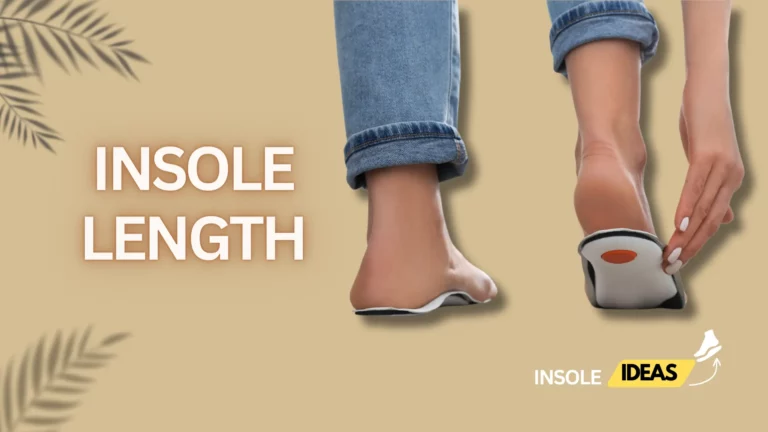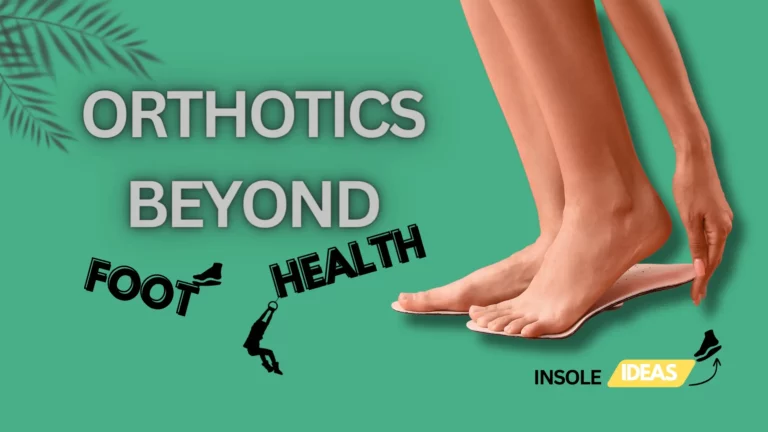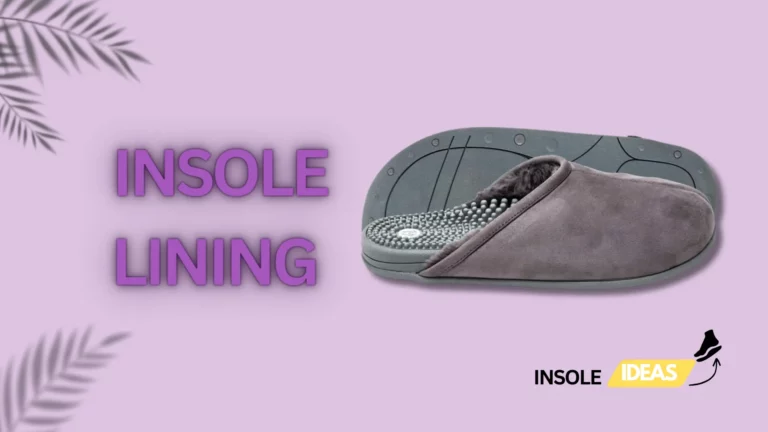Truth and Finding the Right Support
Definition of Flat Feet
Flat feet, medically known as pes planus, refer to a condition where the arches of the feet are significantly flattened, causing the entire sole of the foot to touch the ground. This deviation from the typical foot structure can vary in severity and might affect one or both feet. It’s a frequent condition that can affect a person’s gait and distribution of weight bearing owing to a number of circumstances.
Prevalence and Causes
Flat feet prevalence differs across age groups and populations, with estimates suggesting that around 20-30% of the global population has some degree of flat feet. Causes can range from genetics and developmental issues during childhood to injuries, arthritis, or conditions like obesity that put excessive stress on the feet.
Impact on Daily Life and Physical Health
The implications of flat feet extend beyond discomfort in the feet themselves. Individuals might experience difficulties in activities requiring prolonged standing or walking, leading to fatigue or discomfort. Furthermore, untreated flat feet can contribute to an increased risk of developing musculoskeletal issues like plantar fasciitis, bunions, or stress fractures.
Understanding Flat Feet
Anatomy of the Foot Arch
The foot arch comprises tendons, ligaments, and bones working together to form three primary arches: the medial longitudinal arch, lateral longitudinal arch, and transverse arch. In individuals with flat feet, the medial longitudinal arch is collapsed or significantly lowered. This anatomical variation affects weight distribution and shock absorption while walking or standing, potentially leading to discomfort.
Common Signs of Flat Feet
Identifying flat feet involves observing certain indicators, such as the entire foot touching the ground when standing, inward rolling of the ankle (overpronation), and potential visible flattening of the arch. Some individuals may not experience any symptoms, while others may encounter pain or strain in the feet, ankles, or lower limbs, especially after prolonged activity.
Differentiating Between Flexible and Rigid Flat Feet
The Link Between Flat Feet and Pain
Exploring Foot Pain and Discomfort
Individuals with flat feet might experience various discomforts, including arch pain, heel pain (plantar fasciitis), or general foot fatigue. These feelings may be exacerbated by tight muscles and inflammation brought on by inadequate arch support.Connecting Flat Feet to Ankle, Knee, and Back IssuesThe lower limbs’ alignment may be impacted by flat feet, which may lead to problems like overpronation. This misalignment can lead to added stress on the ankles, knees, and even the lower back, contributing to conditions like Achilles tendonitis, shin splints, or back pain.
Impact on Posture and Overall Body Alignment
The feet serve as the foundation for body alignment. With flat feet, improper weight distribution and altered biomechanics can result in poor posture and alignment issues throughout the body. Correcting foot posture through appropriate interventions can positively influence overall body alignment and potentially alleviate associated discomforts.
Can Insoles Make a Difference?
How insoles work to support the feet
Insoles, sometimes referred to as footbeds or shoe inserts, provide the feet with a variety of supports. They are designed to provide additional cushioning, arch support, and alignment for the feet within shoes. These devices aim to distribute pressure more evenly across the foot, reducing strain on particular areas. Arch-support insoles, for instance, help by bolstering the arches, offering stability, and minimizing excessive rolling inward (pronation) or outward (supination) of the feet during movement. Cushioned insoles, on the other hand, act as shock absorbers, reducing impact forces while walking or running.
Research on the effectiveness of insoles for flat feet
Numerous studies have examined the efficacy of insoles for individuals with flat feet. Well-made insoles have been shown to significantly lessen the pain and suffering associated with flat feet. They provide necessary arch support, redistributing weight to reduce strain on the arches and the surrounding muscles. Moreover, wearing insoles has been linked to improved foot alignment, potentially mitigating issues caused by overpronation commonly seen in flat-footed individuals.
Types of insoles: arch support, cushioned, and corrective
There are diverse types of insoles catering to specific foot conditions. Arch support insoles focus on lifting and supporting the natural arch of the foot, aiding those with fallen arches or flat feet. Cushioned insoles primarily offer shock absorption, benefitting individuals seeking additional comfort and impact reduction during activities.
Corrective insoles
are custom-made to address specific foot irregularities, providing personalized support and alignment tailored to an individual’s unique foot structure. These insoles aim to correct imbalances, enhance gait, and reduce discomfort caused by misalignments.
Benefits of Using Insoles for Flat Feet
Alleviating pain and discomfort
One of the foremost benefits of using insoles for flat feet is the alleviation of pain and discomfort. Because flat feet lack arch support, they can cause pressure on the muscles and ligaments. Insoles designed for flat feet help distribute weight evenly, reducing pressure on specific areas and providing necessary support to mitigate pain.
Improving stability and balance
Insoles play a crucial role in enhancing stability and balance for individuals with flat feet. By providing arch support and aligning the feet properly, insoles assist in correcting pronation issues, which can improve overall stability while standing, walking, or engaging in physical activities.
Enhancing overall foot function
Using insoles tailored for flat feet can significantly enhance overall foot function. By promoting proper alignment, reducing overpronation, and providing adequate support, these insoles contribute to better foot posture, gait, and functionality. This, in turn, can minimize the risk of related issues such as plantar fasciitis and shin splints, allowing for improved mobility and comfort.
Choosing the Right Insoles
Selecting the right insoles is crucial for optimal foot support and comfort. Understanding the differences between custom and over-the-counter (OTC) insoles, considering foot arch types, and examining material and design factors are essential steps in this process.
Custom vs. Over-the-Counter Insoles
Custom insoles are tailored specifically to an individual’s foot shape and biomechanics, providing personalized support. They are typically recommended for severe foot conditions or irregularities. On the other hand, OTC insoles are readily available and designed to fit a range of foot shapes. They can offer adequate support for common issues like mild to moderate arch discomfort.
Both custom and OTC insoles have their merits. Custom insoles offer precise support, but they can be costly and may require professional consultation. OTC insoles, while more accessible and affordable, might not provide the tailored support required for specific foot conditions.
Considering Foot Arch Types
Understanding your foot arch type—whether it’s flat, neutral, or high—plays a vital role in selecting suitable insoles. Flat-footed individuals often benefit from insoles offering arch support to alleviate pressure on the arches and improve overall foot alignment. Different amounts of support may be needed for neutral or high arches in order to transfer weight equally over the foot.
Material and Design Factors to Look For
When choosing insoles, consider the materials used and their design features. Materials like gel, foam, or orthotic inserts provide varying levels of cushioning and support. Breathability and moisture-wicking properties are crucial, especially for individuals with active lifestyles or those prone to sweating.
Tips for Proper Insole Usage
Insoles are an excellent aid for various foot conditions, but their effectiveness depends on proper usage. Gradual adaptation to insole use is crucial. Initially, wear them for shorter periods, allowing your feet to adjust gradually. Start with an hour or two daily and gradually increase wear-time as comfort allows. This gradual approach minimizes discomfort and lets your feet adapt to the support provided by the insoles.
Regular foot exercises and stretches complement insole usage
These exercises help maintain flexibility, strengthen muscles, and improve overall foot health. Simple exercises like toe curls, ankle rotations, and arch stretches can prevent stiffness and enhance the effectiveness of insoles by supporting the foot’s natural movement.
Lifestyle Changes for Flat Feet Management
The management of flat feet involves lifestyle adjustments for long-term relief. Proper footwear plays a vital role. Wearing shoes with enough cushioning and arch support may greatly lessen pain. Podiatrists often recommend orthotic shoes or inserts to provide adequate support for flat feet. Such footwear minimizes stress on the arches and promotes better foot alignment.
Exercises targeting foot muscles are crucial for flat feet management. Strengthening exercises like toe raises, arch lifts, and towel scrunches can improve foot stability and reduce pain associated with flat feet. These exercises help in building strength in the arches and supporting muscles, enhancing overall foot function.
The strain on flat feet can be lessened by leading an active lifestyle and being at a healthy weight. Having more weight puts strain on the feet, exacerbating the condition. Low-impact activities that lessen foot discomfort and help control weight include swimming and cycling.
Professional Interventions for Flat Feet
Podiatrist Recommendations For some people, flat feet—a condition in which the arches of the feet are nonexistent or lowered—can cause pain and suffering. Podiatrists, specialized foot doctors, offer valuablerecommendations for managing flat feet. These professionals conduct thoroughassessments to understand the specific needs of each patient. They mightsuggest custom orthotic devices, exercises, or lifestyle adjustments to alleviate discomfort and improve foot function.
Orthopedic Assessments and Treatments
Orthopedic specialists play a pivotal role in evaluating and treating flat feet. To measure how severe the illness is, they use a variety of methods, such as imaging and gait analysis. Treatment options may range from physical therapy to strengthen muscles and improve alignment, to recommending specific footwear or braces to provide adequate support.
Surgical Options for Severe Cases
In severe cases of flat feet that significantly impact mobility or cause chronic pain, surgical interventions might be considered. Surgical procedures aim to reconstruct the foot’s arch, correct misalignments, or address underlying structural issues. Surgery, however, is usually reserved for the very last moment, following the failure of non-invasive therapies.
Conclusion
Insoles play a crucial role in managing flat feet by providing additional support and cushioning. They provide comfort and stability throughout daily activities by assisting in the equal distribution of weight and easing the pressure on the arches.
Empowering Individuals to Make Informed Decisions for
Their Well-being Empowerment through education is key. By providing comprehensive information about flat feet, its management strategies, and available interventions, individuals can make informed decisions about their foot health. This empowerment fosters a proactive attitude towards managing and improving their overall well-being.





